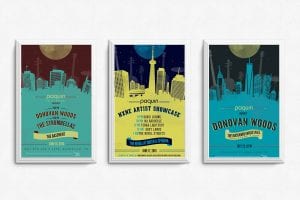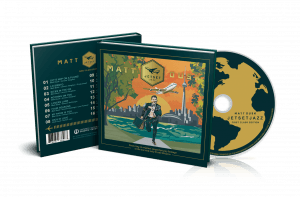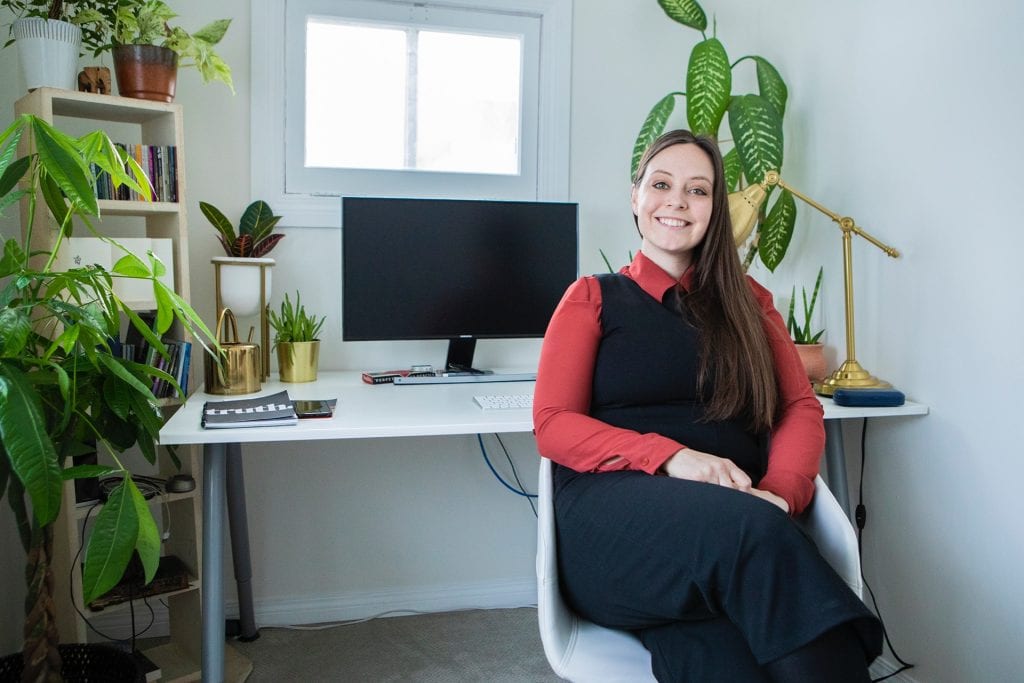Solo artist: Graphic Design grad a hitmaker in the Canadian music scene
It didn’t take artist Roberta Landreth long to find her groove after she graduated in 2012 from Red River College’s Graphic Design (Advanced) program.
The 32-year-old proprietor of Treehouse Design landed a gig at brand development and communications firm Honest Agency directly out of college, working with clients like Folklorama and KidsFest. Just two years later, while she was deeply immersed in a side project, she was ready to hang out her own shingle.
In 2015, that side project — designing album art and a 150-page booklet for Christian musician Steve Bell’s 25th anniversary box set Pilgrimage — earned her a Juno Award, a Western Canadian Music Award (WMCA) and the Gospel Music Association of Canada’s Covenant Award.
“That one was a huge amount of work, like hundreds of hours,” she says.
“I just finished another kind of heavy-duty one for a guy named Matt Dusk out of Toronto. That one was crazy.”
As in crazy-cool. Working on a tight deadline, that job included a 50-page book with 10 illustrations for retro-crooner Dusk’s new JetSetJazz tribute to Frank Sinatra.
Her most important client is much closer to home — her husband of two years, David, who founded local roots-rock outfit the Bros. Landreth with his sibling Joey.
Bell first enlisted Landreth (nee Hansen) after seeing her artwork on their album Let It Lie, for which they picked up a 2015 Juno Award just moments before Roberta’s win at a gala in Hamilton, Ont.
“That was very exciting. That day was awesome because Joey’s partner Anna got to go, too, so we all got to experience that moment together,” she says.
While she working on Pilgrimage, she began to amass a client base that has since led to work for dozens of musicians, the West End Cultural Centre, industry associations and music festivals, designing posters, publicity and branding material and album art for artists including JP Hoe, Del Barber, Big Wreck and Sierra Noble.
She earned a second WCMA in 2016, for The Small Glories’ Wondrous Traveler, and chalked up a third win this fall at WCMA’s BreakOut West festival in Kelowna for all-round Excellence in Visual Design. It was also the third year running that she co-designed the festival’s posters, pamphlets and other material.
 Success hasn’t come without its challenges. In 2019, she plans to fine-tune her business, whittling down a ballooning client roster to allow for some personal space.
Success hasn’t come without its challenges. In 2019, she plans to fine-tune her business, whittling down a ballooning client roster to allow for some personal space.
“I’m exceedingly grateful for the amazing lineup of clients that I work with,” she says. “Moving into this next year of being self-employed, my goal is to find a balance between work life and personal life, so I can set myself up to be in a good mind-frame to produce quality work for my clients.”
Graphic artist wasn’t Landreth’s first career choice, or even second. At 18, she wanted to be a psychologist.
After earning a degree in psychology and English at the University of Winnipeg, she planned to enter the Honours program. Then she helped a friend who was completing her own Honours in psychology, which involved a six-month study and acres of statistical data.
Realizing she’d spend as much time analyzing numbers as she would working with people, Landreth decided to switch paths. And when she dropped by RRC to investigate the Creative Communications program, yet another door opened, one that appealed to her artistic nature.
“I picked up the pamphlet for the Graphic Design program and I was like, ‘This looks amazing!’”
She had doubts that the three-year Graphic Design program would lead to a viable career, but with just six weeks to put together a portfolio she set to work completing the assignments required for admission, which by chance included creating some album art. She also had to learn to use a computer program — starting from the most basic of skills.
“I was like, ‘How do you turn this on?’ she recalls.
“I came into that school literally not knowing how to turn on my Mac computer and now I’m running a business that is successful seven years later. That’s pretty impressive in terms of an education model I think.”
 After spending so much quality time in university focusing on theory, she was impressed by the practical step-by-step instruction she received at RRC.
After spending so much quality time in university focusing on theory, she was impressed by the practical step-by-step instruction she received at RRC.
“Red River is like, ‘You are going to get a job and this is how you do that job,’ and I love that. It was exactly what I needed at that point,” she says.
“Honestly, I tell everyone that I meet when they’re trying to decide whether to do university or Red River, I just tell them it’s a fantastic program, because it really, genuinely sets you up for what you want to do, and in an efficient way that I don’t think any undergraduate program in university ever could.”
During her time at RRC, she had two practicum placements, first at Honest Agency and later at the Canadian Centre for Child Protection. She enlisted a senior designer at Honest Agency to be her third-year mentor, and she’s paying it forward today, mentoring a current RRC student.
Acting as a mentor and getting out of her home office to work in a shared studio space one or two days a week helps Landreth stay in touch with new developments in the field and in the broader world.
She says one of the challenges of a solo career is that there’s nobody to push her out of her comfort zone. A groove is good; but Landreth doesn’t want it to become a rut.
Profile by Pat St. Germain (Creative Communications, 1989)

